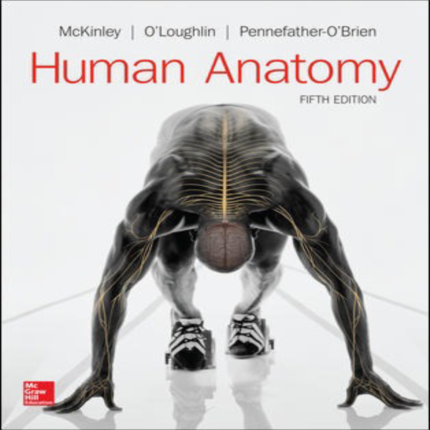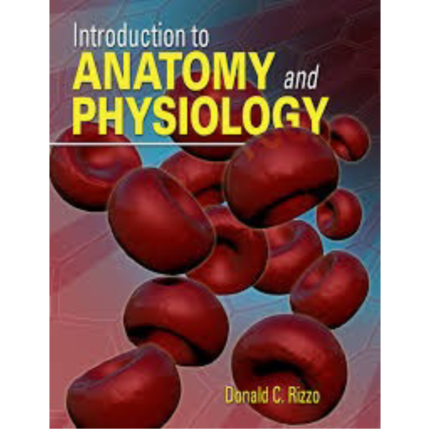Chapter 11
Functional Organization of Nervous Tissue
Multiple Choice Questions
- The nervous system
A. monitors internal and external stimuli.
B. transmits information in the form of action potentials.
C. interprets or assesses information.
D. maintains homeostasis.
E. All of these choices are correct.
Bloom’s Level: 1. Remember
HAPS Objective: H01.01 Describe the major functions of the nervous system.
Learning Outcome: 11.01A. Explain the functions of the nervous system.
Section: 11.01
Type: Study Guide
- Which of the following is responsible for problem-solving skills?
A.central nervous system
B. peripheral nervous system
C. somatic nervous system
D. autonomic nervous system
E. None of these choices is correct.
Bloom’s Level: 1. Remember
HAPS Objective: H02.01 Describe the nervous system as a control system identifying nervous system elements that are sensory receptors, the afferent pathway, control centers, the efferent pathway, and effector organs.
HAPS Objective: H03.01 List the parts of the nervous system that constitute the central nervous system (CNS) and those that constitute the peripheral nervous system (PNS).
Learning Outcome: 11.02A. List the divisions of the nervous system, and describe the characteristics of each.
Learning Outcome: 11.02C. Contrast the general functions of the CNS and the PNS.
Section: 11.02
- The central nervous system includes the
A.ganglia.
B. spinal cord.
C. spinal nerves.
D. cranial nerves.
E. sensory receptors.
Bloom’s Level: 1. Remember
HAPS Objective: H03.01 List the parts of the nervous system that constitute the central nervous system (CNS) and those that constitute the peripheral nervous system (PNS).
Learning Outcome: 11.02A. List the divisions of the nervous system, and describe the characteristics of each.
Learning Outcome: 11.02C. Contrast the general functions of the CNS and the PNS.
Section: 11.02
Type: Study Guide
- The peripheral nervous system includes the
A.brain.
B. spinal cord.
C. cranial nerves.
D. blood-brain barrier.
E. cerebellum.
Bloom’s Level: 1. Remember
HAPS Objective: H03.01 List the parts of the nervous system that constitute the central nervous system (CNS) and those that constitute the peripheral nervous system (PNS).
Learning Outcome: 11.02A. List the divisions of the nervous system, and describe the characteristics of each.
Learning Outcome: 11.02C. Contrast the general functions of the CNS and the PNS.
Section: 11.02
Type: Study Guide
- There are _____ pairs of cranial nerves and _____ pairs of spinal nerves.
A.10; 30
B. 31; 12
C. 12; 31
D. 30; 10
E. 12; 32
Bloom’s Level: 1. Remember
HAPS Objective: H03.01 List the parts of the nervous system that constitute the central nervous system (CNS) and those that constitute the peripheral nervous system (PNS).
HAPS Objective: H09.01 List the cranial nerves by name and number.
HAPS Objective: H10.01 Describe the gross anatomy of the spinal cord and spinal nerves and specify their location relative to the anatomy of the skeletal system.
Learning Outcome: 11.02A. List the divisions of the nervous system, and describe the characteristics of each.
Learning Outcome: 11.02C. Contrast the general functions of the CNS and the PNS.
Section: 11.02
Type: Study Guide
- Cell bodies of the peripheral nervous system are located in
A.ganglia.
B. Schwann cells.
C. the motor division.
D. the sensory division.
E. nerves.
Bloom’s Level: 1. Remember
HAPS Objective: H03.01 List the parts of the nervous system that constitute the central nervous system (CNS) and those that constitute the peripheral nervous system (PNS).
HAPS Objective: H03.02d Describe the location of the cell bodies of each of the three structural types of neurons (unipolar, bipolar and multipolar) within the nervous system.
HAPS Objective: H10.05 Discuss how the structures root, nerve, ramus, plexus, tract and ganglion relate to one another.
Learning Outcome: 11.02A. List the divisions of the nervous system, and describe the characteristics of each.
Learning Outcome: 11.02C. Contrast the general functions of the CNS and the PNS.
Section: 11.02
Type: Study Guide
- The sensory (afferent) division of the peripheral nervous system
A.transmits action potentials to sensory organs.
B. conveys action potentials to the CNS.
C. stimulates glands to release hormones.
D. stimulates muscle contractions.
E. does not involve sensory receptors.
Bloom’s Level: 1. Remember
HAPS Objective: H02.01 Describe the nervous system as a control system identifying nervous system elements that are sensory receptors, the afferent pathway, control centers, the efferent pathway, and effector organs.
Learning Outcome: 11.02A. List the divisions of the nervous system, and describe the characteristics of each.
Learning Outcome: 11.02C. Contrast the general functions of the CNS and the PNS.
Section: 11.02
Type: Study Guide
- The motor (efferent) division of the peripheral nervous system
A.is a division of the CNS.
B. regulates the digestion of food.
C. transmits impulses from the CNS to skeletal muscle.
D. has nerve cell bodies located in ganglia near the spinal cord and brain.
E. detects a stimulus.
Bloom’s Level: 1. Remember
HAPS Objective: H02.01 Describe the nervous system as a control system identifying nervous system elements that are sensory receptors, the afferent pathway, control centers, the efferent pathway, and effector organs.
Learning Outcome: 11.02A. List the divisions of the nervous system, and describe the characteristics of each.
Learning Outcome: 11.02C. Contrast the general functions of the CNS and the PNS.
Section: 11.02
Type: Study Guide
- The autonomic nervous system
A.stimulates skeletal muscle contractions.
B. has two sets of neurons in a series.
C. is involved in problem solving.
D. is under voluntary control.
E. does not include the central nervous system.
Bloom’s Level: 1. Remember
HAPS Objective: H02.02 Differentiate between the somatic and autonomic divisions of the nervous system.
Learning Outcome: 11.02B. Differentiate between the somatic and the autonomic nervous systems.
Section: 11.02
Type: Study Guide
- Digestion of food is regulated by the
A. sensory division.
B. sympathetic division of the ANS.
C. parasympathetic division of the ANS.
D. somatic nervous system.
E. None of these choices are correct.













Reviews
There are no reviews yet.